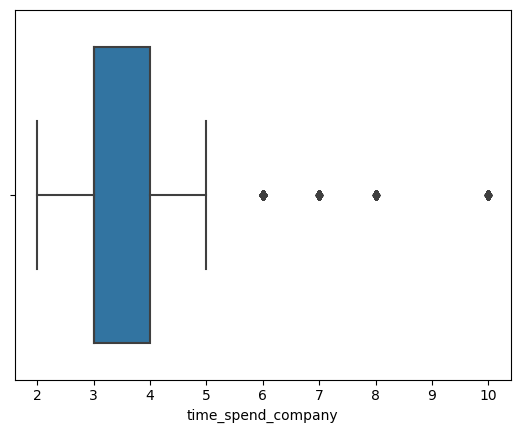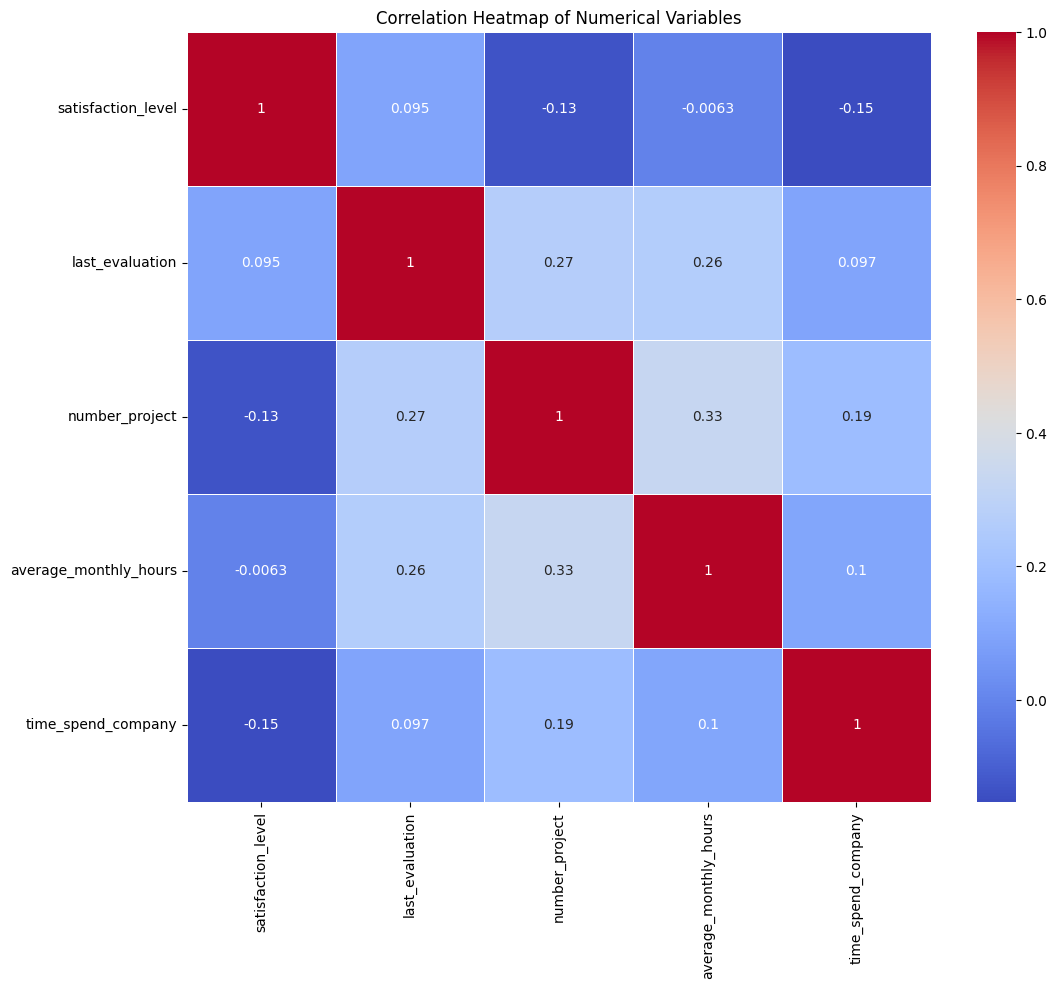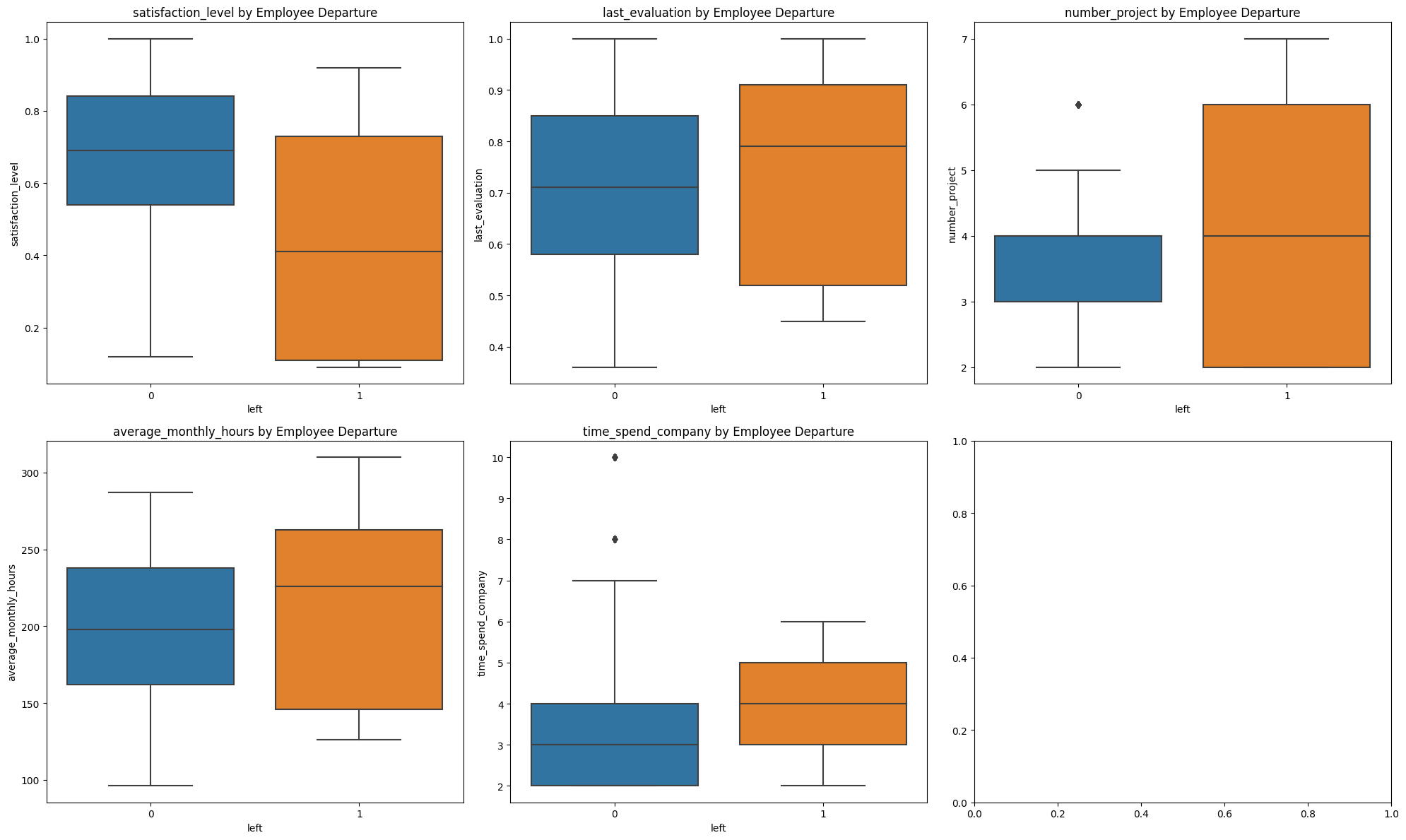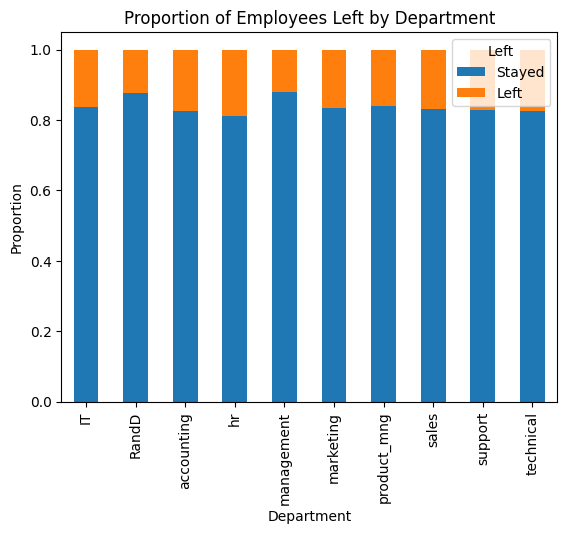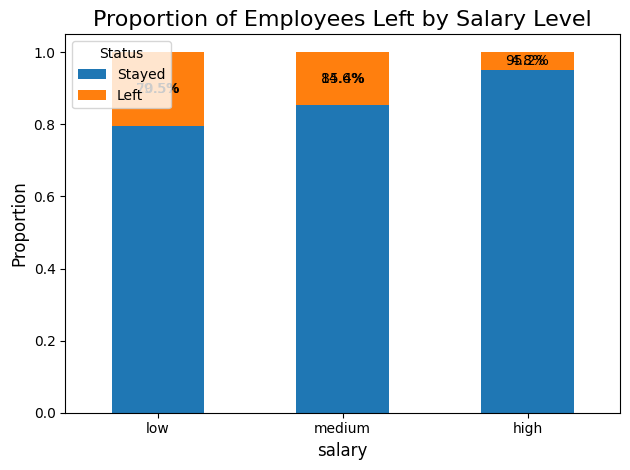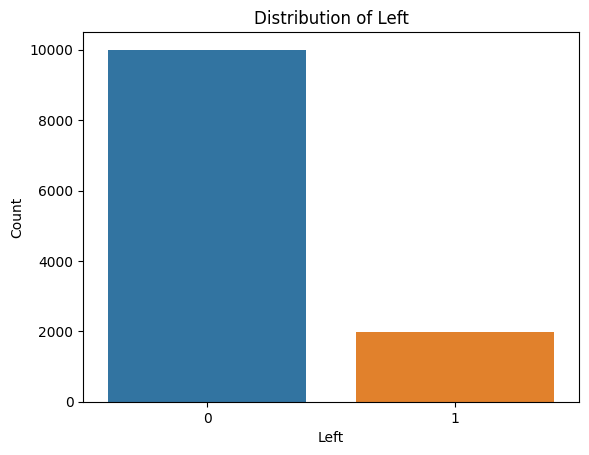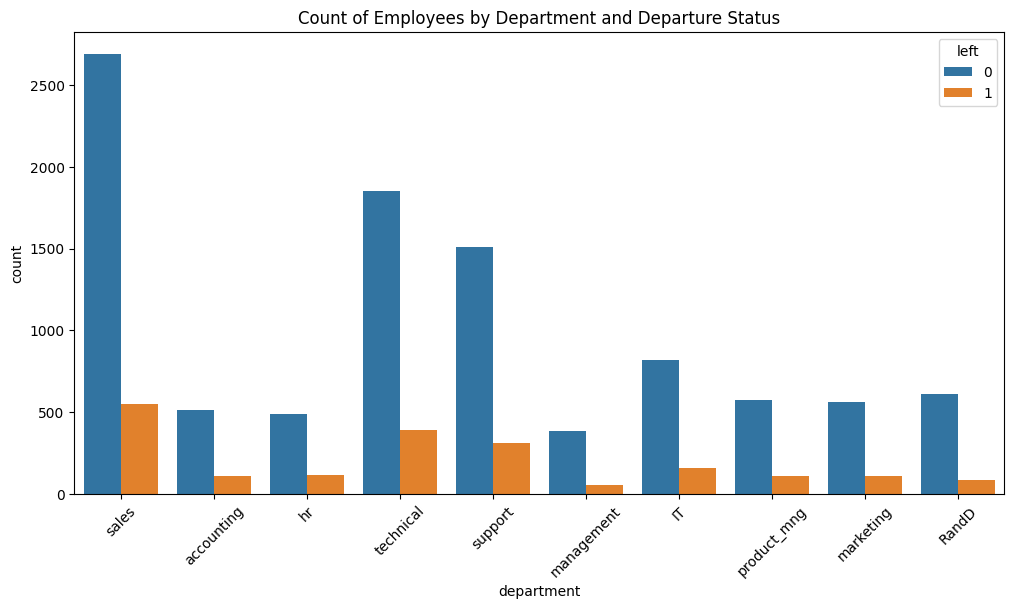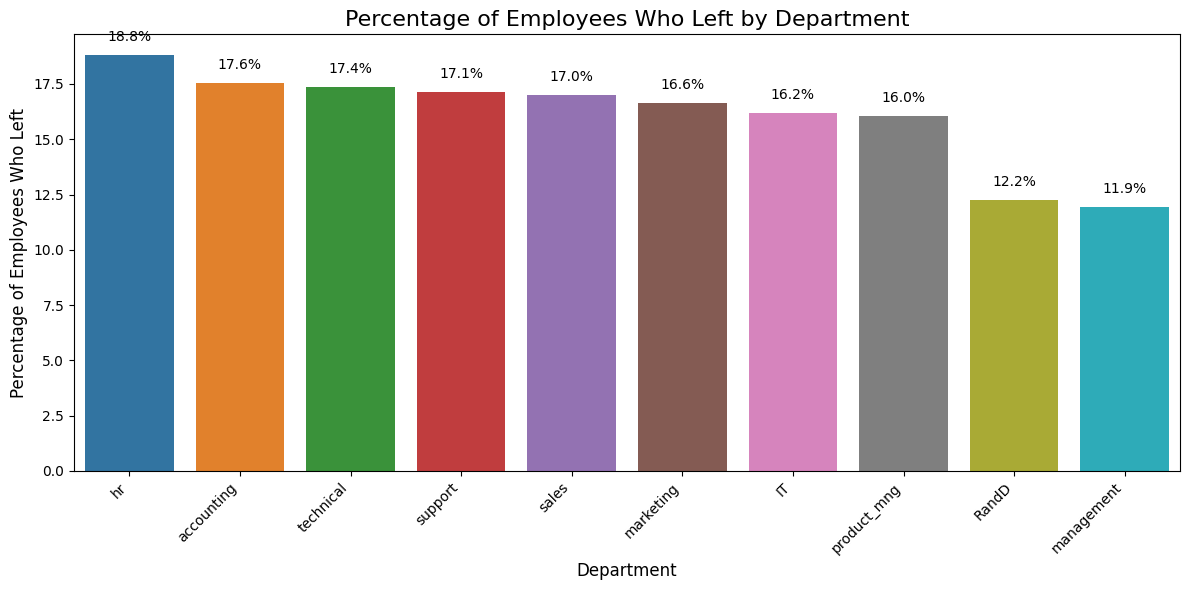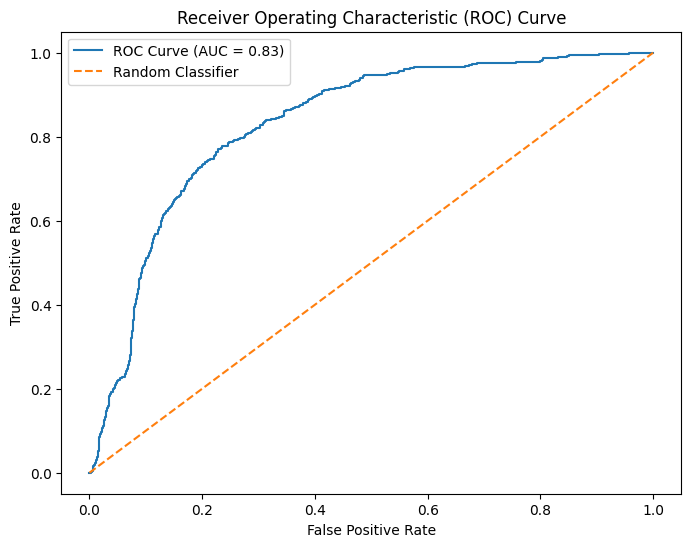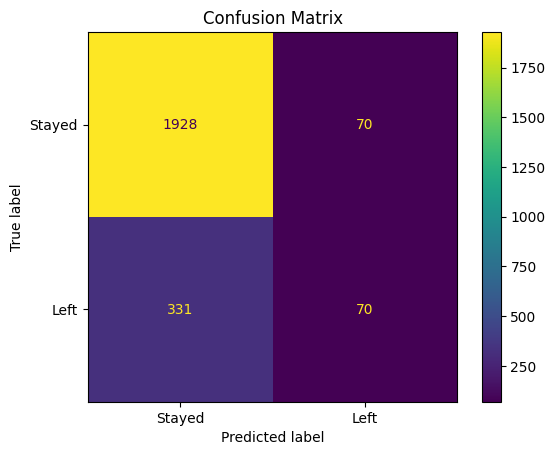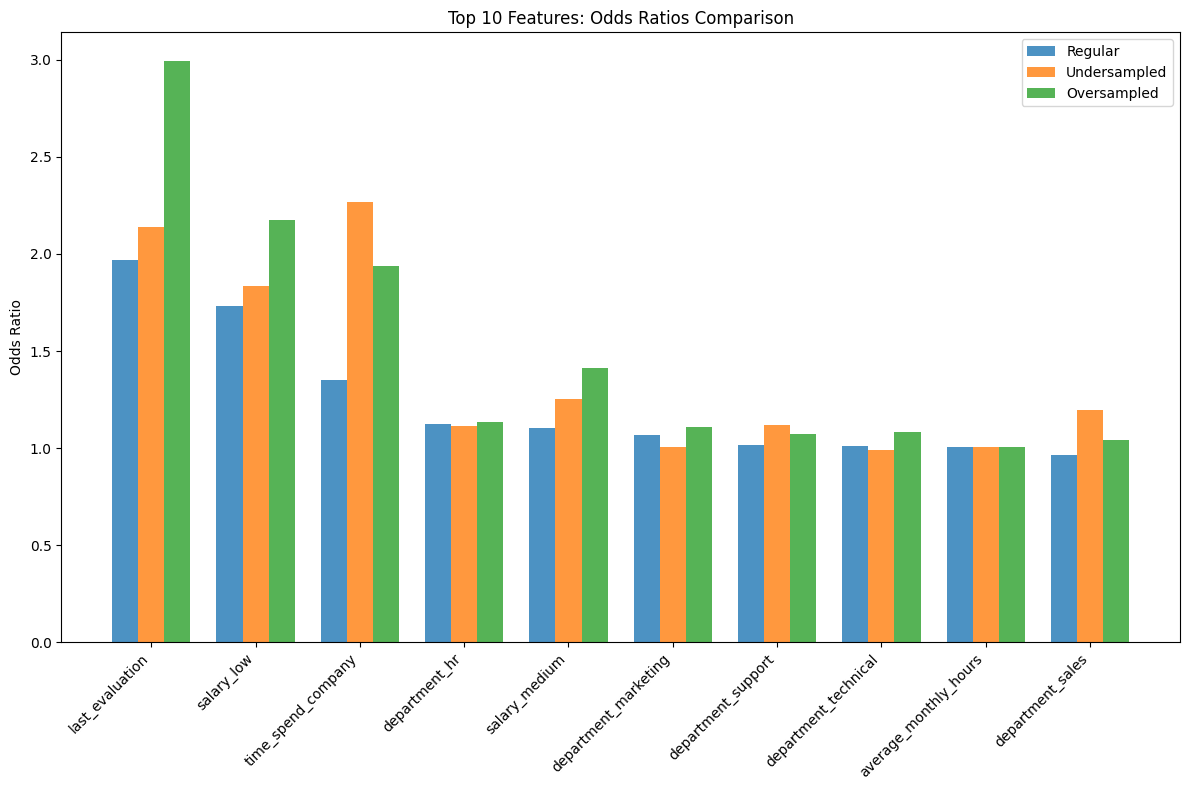Employee Turnover Analysis and Retention Strategy Development at Salifort Motors
Salifort Motors is experiencing a high rate of employee turnover, impacting productivity, team morale, and overall business performance. This project aims to analyze the company's employee dataset to identify the key factors contributing to this turnover. The project's objective is to develop data-driven recommendations and strategies for improving employee retention and mitigating the negative impacts of turnover on the organization. This project is commissioned by the HR department.
Methodology
I approached this analysis in a structured manner to ensure comprehensive coverage and generate actionable insights:
-
Data Acquisition and Preparation:
- I used a publicly available dataset from Kaggle, containing information on 14,999 employees.
- The dataset includes factors such as satisfaction levels, performance reviews, workload, tenure, work accidents, promotions, department, and salary.
- I meticulously cleaned and preprocessed the data to maintain accuracy and integrity.
-
Exploratory Data Analysis (EDA):
- I conducted a comprehensive EDA to explore relationships between variables and identify potential turnover drivers.
- My analysis included:
- Visualization techniques: histograms, box plots, correlation heatmaps, and stacked bar charts.
- Statistical analysis: descriptive statistics, t-tests, and ANOVAs to compare different groups.
-
Predictive Modeling:
- I built predictive models to identify the most influential factors impacting employee turnover:
- Logistic Regression for predicting whether an employee will leave or stay.
- Decision Tree and Gradient Boosting Models to identify complex relationships and provide insights into feature importance.
- I evaluated the models using key metrics: accuracy, precision, recall, F1-score, and AUC.
- I built predictive models to identify the most influential factors impacting employee turnover:
-
Interpretation and Recommendations:
- I analyzed the model results to identify key features influencing turnover predictions.
- I translated these insights into actionable recommendations for our HR department.
Key Findings
- Employee satisfaction is the strongest predictor of turnover. Low satisfaction significantly increases the likelihood of an employee leaving.
- High last evaluation scores are unexpectedly linked to turnover. This suggests dissatisfaction among high performers, possibly due to a lack of growth opportunities or feeling undervalued.
- Low salary is a major risk factor. Competitive compensation is crucial for retaining talent.
- Longer tenure correlates with higher turnover, highlighting the need to focus on engagement and career development for long-term employees.
Recommendations
-
Prioritize Employee Satisfaction:
- Implement regular satisfaction surveys (quarterly or pulse surveys).
- Take swift action based on feedback to show employees their voices are valued.
- Invest in recognition programs to acknowledge and reward contributions.
-
Re-evaluate Performance Reviews:
- Focus evaluations on career development, not just performance assessment.
- Provide clear career paths, training programs, and advancement opportunities.
- Tie meaningful rewards to performance for top performers.
-
Review Salary Structure:
- Conduct industry and regional salary benchmarking.
- Establish transparent salary bands and criteria for raises and promotions.
-
Address Workload and Tenure Concerns:
- Promote work-life balance through flexible arrangements and encouraging vacation time.
- Implement programs recognizing loyalty and offering career reinvention pathways for long-term employees.
Impact
By implementing these recommendations, I believe we can create a more engaged and satisfied workforce at Salifort Motors. This will reduce turnover, save costs on recruitment and training, and ultimately boost our productivity and organizational success.
